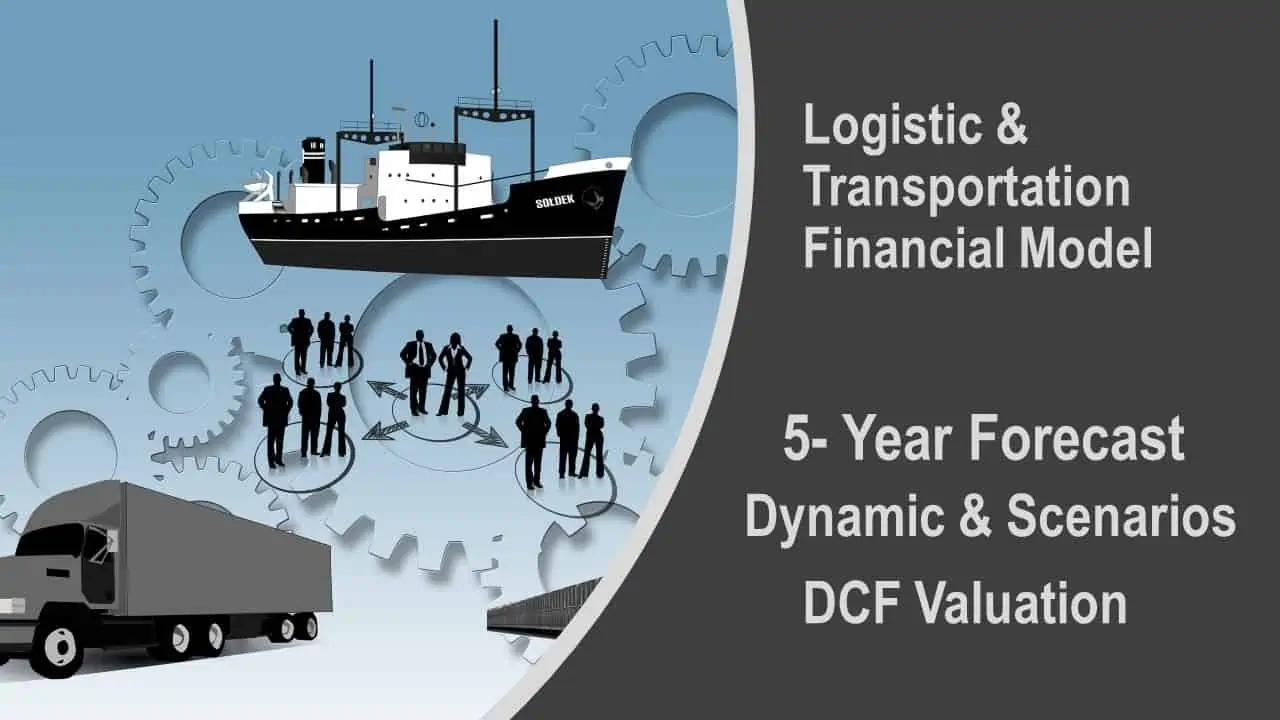Urban Micro-Mobility Services Financial Model (10+ Yrs. DCF and Valuation)
The Urban Micro-Mobility Services Financial Model with DCF (Discounted Cash Flow) and Valuation is a comprehensive tool designed to analyze the financial aspects of micro-mobility service providers operating in urban areas. It encompasses key components such as revenue projections, operating expenses, fleet growth, pricing strategies, and long-term financial valuation. This model provides insights into the financial performance and value potential of urban micro-mobility services, enabling informed decision-making, investment assessment, and strategic planning.

The Urban Micro-Mobility Services Financial Model with DCF (Discounted Cash Flow) and Valuation is a comprehensive tool designed to analyze the financial aspects of micro-mobility service providers operating in urban areas. It encompasses key components such as revenue projections, operating expenses, fleet growth, pricing strategies, and long-term financial valuation. This model provides insights into the financial performance and value potential of urban micro-mobility services, enabling informed decision-making, investment assessment, and strategic planning.
Key Components:
– Revenue Projections: The model assesses revenue sources from micro-mobility rides, subscriptions from corporates and individuals, and tourist day passes.
– Operating Expenses: It includes costs for fleet maintenance, charging infrastructure, marketing, administrative expenses, and other operational expenditures essential for running the micro-mobility services.
– Fleet Growth and Utilization: The model estimates fleet expansion and utilization rates, influencing revenue and profitability.
– Pricing Strategies: It considers competitive pricing while factoring in costs to determine ride rates and subscription fees that ensure profitability and remain attractive to riders.
– DCF and Valuation: The model employs DCF analysis and valuation methods to assess the long-term financial sustainability and attractiveness of urban micro-mobility services.
Key Benefits:
– Informed Decision Making: The Urban Micro-Mobility Services Financial Model empowers stakeholders to make data-driven decisions regarding fleet expansion, pricing, marketing strategies, and resource allocation.
– Investment Assessment: DCF and valuation methods provide insights into the business’s long-term value, aiding investment assessment, attracting investors, and securing financing.
– Strategic Planning: Financial projections support strategic planning by allowing stakeholders to assess the potential outcomes of expanding services, entering new markets, or enhancing the micro-mobility platform’s features.
– Financial Sustainability: The model helps assess the financial sustainability of the urban micro-mobility services over an extended horizon, guiding measures to ensure long-term success.
In summary, the Urban Micro-Mobility Services Financial Model with DCF and Valuation offers valuable insights into the financial performance and long-term value potential of micro-mobility service providers in urban areas. It supports informed decision-making, investment assessment, strategic planning, and financial sustainability, all of which contribute to the success and profitability of urban micro-mobility services.
————————————————————————————————
MODEL GUIDELINES
So, a quick overview of the model, in the contents tab you can see the structure of the model and by clicking on any of the headlines to be redirected to the relevant worksheet.
On the manual tab you can feed the general information for the model such as: project name & title, responsible, timeline of the model and date and currency conventions.
Additionally, there is a description of the color coding of the model in the same tab. Inputs are always depicted with a yellow fill and blue letters, call up (that is direct links from other cells) are filled in light blue with blue letters while calculations are depicted with white fill and black characters.
There is also color coding for the various tabs of the model. Yellow tabs are mostly assumptions tabs, grey tabs are calculations tabs, blue tabs are outputs tabs (that is effectively results or graphs) and finally light blue tabs are admin tabs (for example: the cover page, contents, and checks).
Moving on to the Inputs: detailed inputs for revenues such as consultations, subscriptions, insurance partnerships, corporate health programs, on demand specialists, and costs splits between direct costs (healthcare provider payments, and infrastructure costs) and indirect costs (such as admin staff, outsourced staff, insurance, advertising & promotions as well as other costs), working capital (receivables, payables, and inventory), fixed assets and capex (split into start up investment and new maintenance capex), debt & equity financing as well as valuation assumptions (such as discount rates used in the weighted average cost of capital).
In the summary tab you can see a high-level report with the main metrics and value drivers of the model. It can be readily printed on one page for your convenience.
Calculations: this is where all calculations are performed. The revenues are calculated based on the various revenue streams and by deducting the operating costs adjusted for inflation the operating profit is resulting. Based on the assets financed and the gearing of the financing the interest and depreciation are occurring. By using the working capital assumptions, the impact of the business cycle is presented. Finally, depending on the level of the investment considered the relevant debt financing is calculated (Long term debt and overdraft).
In the Outputs tab: everything is aggregated here into the relevant statements: profit and loss, balance sheet and cash flow.
Moving to the Valuation tab, a valuation is performed by using the free cash flows to the firm and then a series of investment metrics are presented (Net Present Value, Internal Rate of Return, Profitability Index, Payback Period, Discounted Payback Period, Sensitivity Analysis).
In the Graphs tab: Various graphs present the business metrics, revenues, operating costs, and profitability. Then multiple charts present the working capital, debt & equity along with cash, assets, and cash flows which results in a valuation on a project basis as well as on an equity basis together with the feasibility metrics.
In the Break-Even tab, you can find a break-even analysis and see how many sales you need to break even.
Checks: A dedicated worksheet that makes sure that everything is working as it should!
Important Notice: Yellow indicates inputs and assumptions that the user can change, blue cells are used for called up cells, and white cells with black characters indicates calculation cells.
File types: .xlsx and .pdf
Similar Products
Other customers were also interested in...
Moving Services Business Financial Model (10+ Yrs ...
The moving services business financial model is a comprehensive tool designed to analyze the financi... Read more
Port Operator Financial Model
Port Operator Financial Model presents the business case of an already operating port terminal (with... Read more
Online Car Rental – 3 Statement Financial Mo...
Online Car Rental Platform Business Plan Model is a perfect tool for a feasibility study on launchin... Read more
Private Aircraft Rental Company Financial Model
Embark on a journey to financial mastery with our Private Aircraft Rental Company Financial Model, w... Read more
Cruise Line Company – Dynamic 10 Year Financial ...
The essential productive activity of the tourism industry, particularly as the consumption of experi... Read more
Car Rental Business Financial Model
This Car Rental Business Financial Model Template in Excel offers an ideal basis for developing a bu... Read more
Crane Truck Rental Company Financial Model
Step into the world of crane rental business success with our Crane Truck Rental Company Financial M... Read more
Trucking Company – 10 Year Financial Model
Financial Model providing a dynamic up to 10-year financial forecast for a startup or existing Truck... Read more
ALL IN ONE Logistics & Transportation integra...
This is a dynamic and advanced DCF valuation model of Logistics and Transportation business with sce... Read more
Crane Rental Company Financial Model
Dive into the financial planning of your Crane Rental Company with our comprehensive 10-year monthly... Read more
You must log in to submit a review.





























